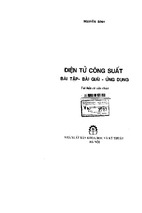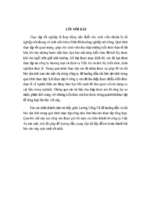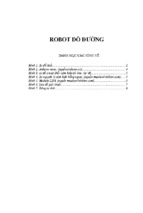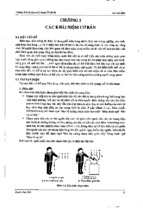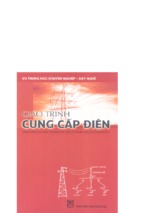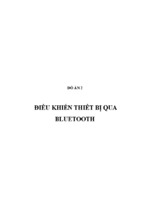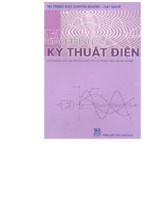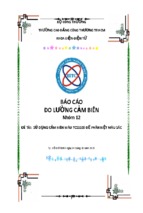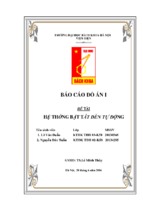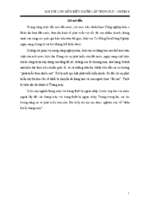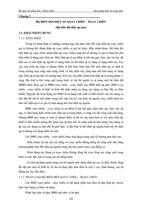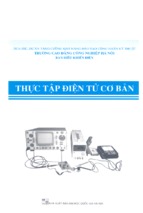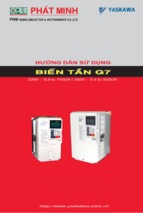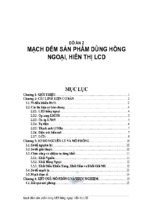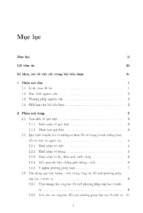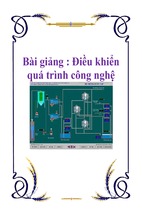Machine Design
UNIT I
Basic Principles of Machine Design
Consists of
1. Introduction
2. Constructional Elements of Transformer
3. Constructional Elements of Rotating Machines
4. Classification of design problems
5. Magnetic loading
6. Electrical loading
7. Output Equation
8. Standard Specifications
1.Introduction
•
The problem of design and manufacture of electrical machinery is to build as
economically as possible, a machine which fulfils a certain set of
specifications and guarantees.
•
The major considerations to evolve good design are
1. Cost
2. Durability
3. Compliance with performance criteria as laid down in specifications
2. Constructional Elements of Transformer
•
1.Iron Core
•
2.Primary and Secondary Winding
•
3.Transformer Tank
•
4.Cooling Tubes
3. Constructional elements of rotating machines
•
1.Stator
•
2.Rotor
•
3.Others
3.(a)DC Machine
1. Stator:
Yoke,Field Pole, Pole Shoe, Field Winding, Interpole
2. Rotor:
Armature Core, Armature Winding , Commutator
Einstein College of Engineering
Machine Design
3. Others:
Brush and Brush holder
3.(b)Squirrel cage induction motor
1. Stator:
Frame, stator core and stator winding
2. Rotor:
Rotor core, rotor bars and Endrings
4. Classification of design problems
•
1. Electromagnetic Design
•
2. Mechanical Design
•
3. Thermal Design
•
4. Dielectric Design
5. Magnetic loading
•
1. Total Magnetic Loading (TML)
TML=Total flux entering and leaving the armature
TML=pØ
2. Specific Magnetic Loading (SML)
SML=(Flux per pole)/Area Under a pole
SML=(pØ)/(¶DL)
6. Electric Loading
•
1. Total Electric Loading (TEL)
TEL=sum of currents in all the conductors on the armature
TEL=IzZ
2. Specific Electric Loading (SEL)
SEL=(Total Armature ampere conductors)
Armatue periphery at airgap
SEL=(IzZ)/¶D
7. Output Equation
•
The output of a machine can be expressed in terms of its main
dimensions, specific magnetic and electric loadings and speed.
•
Pa=CoD2Ln
Where Output coefficient Co=¶2Bavac*10-3
8. Standard Specifications
•
The standard specifications of electrical machines are
Einstein College of Engineering
Machine Design
•
1. Standard ratings of machines
•
2. Types of enclosure
•
3. Standard dimensions of conductors to be used
•
4. Method of marking ratings and name plate details
•
5. Performance specifications to be met
•
6. Types of insulation and permissible temperature loss
•
7. Permissible loss and range of efficiency
•
8. Procedure for testing of machine parts and machines
•
9. Auxiliary equipments
Name Plate Details
•
KW or KVA rating of machine
•
Rated working voltage
•
Operating speed
•
Full load current
•
Class of insulation
•
Frame size
•
Manufacturers name
•
Serial number of the machine
ISO numbers with year
•
IS 325-1966
•
IS 4029-1967 : Guide for testing 3ph induction motor
•
IS12615-1986 : Specifications for energy efficient induction motor
•
IS13555-1993 : Guide for selection & application of 3ph induction motor for
: Specifications for 3ph induction motor
different types of driven equipment
•
IS8789-1996 : Values of performance characteristics for 3ph induction motor
•
IS 12066-1986: 3ph induction motors for machine tools
Einstein College of Engineering
Machine Design
UNIT II
DC Machines
Consists of
-
Constructional Elements
-
Output Equation
-
Choice of specific loadings
-
Selection of number of poles
-
Length of airgap
-
Armature design
-
Field system design
-
Commutator and brushes
-
Efficiency and Losses
1. Constructional Elements
(i) Armature
(1) winding
(2) core
(3) commutator
(ii) Field
(1) winding
(2) core
(3) pole shoe
(iii) Frame
2. Output equation
The output of a machine can be expressed in terms of its main dimensions,
specific magnetic and electric loadings and speed.
Pa=CoD2Ln
Where Output coefficient Co=¶2Bavac*10-3
3. Choice of specific loading
3.1 Choice of specific magnetic loading
Depends on, 1. Flux density in teeth
2. Frequency of flux reversal
Einstein College of Engineering
Machine Design
3. Size of machine
(i) Flux density
Large values of Bav in teeth increases field mmf.
Higher mmf results in increase of iron loss, cu loss & cost of cu.
Bav does not exceed 2.2wb/m2
(ii) Frequency of flux reversal
If f is high then iron losses in arm. Core & teeth would be high.
So high value of Bav is not used.
(iii) Size of machine
If size increases Bav also increases.
As the dia increases the width of the tooth also increases, permitting increased
value of Bg without saturation.
Bg bet 0.55 to 1.15Wb/m2 & Bav 0.4 to0.8 wb/m2
3.2 Choice of specific electric loading
Depends on, 1. Temperature rise
2. Speed of machine
3. Voltage
4. Size of machine
5. Armature reaction
6. Commutation
(i) Temperature rise
Higher ac results in high temp rise of wdgs.
Temp rise depends on type of enclosure & cooling techniques employed.
Ex. In m/cs. Using class F insulation which can withstand a temp. of 155’c,
the value of ac can be approx. 40% higher than that used in m/cs. Designed for class
A insulation which can withstand a temp. of only 105’c.
(ii) Speed of machine
If N is high, ventilation of the machine is better & therefore greater losses can
be dissipated. Thus higher ac can be used for high N.
(iii) Voltage
In high V m/cs large space is reqd. for insulation & therefore less space for
conductors.
Einstein College of Engineering
Machine Design
Ie. Space left for conductors is less & therefore we should use a small value of
ac.
(iv) Size of m/c
In large size m/cs it is easier to find space for accommodating conductors.
Hence ac can be increased with increase in dimensions.
(v) Armature reaction
With high ac, arm. Reaction will be severe. To counter this the field mmf is
increased & so cost goes high.
(vi) Commutation
Ac=Iz*Z
D*Π
High value of ac will have either (i) Large Z OR
(ii) small dia D
(i)
M/c have large Z having large no. of turns; L is proportional to square
of no. of turns; so large ac
(ii)
If small dia, it is not possible to use wide slots because otherwise the
space left for teeth will become smaller giving rise to high B in them.
Only way is us ting deeper slots to use. But the deeper slots increases
the L value.
Increased L increases reactance voltage which delays the commutation.
High ac worsens the commutation condition in m/cs.
From commutation point of view small ac is desirable.
Ac lies bet. 15,000 to 50,000amp.cond/m
4. Selection of no. of poles
The aim of the designer to select the main dimensions as will result in the
minimum cost and yet at the same time meet the desired specifications.
As for as the magnetic circuit is concerned it is necessary to choose a suitable
no. of poles and to suitably proportion them. A proper design of the electric circuit
requires suitable dimensions which result in satisfactory arrangements for wdg and
commutator.
For choice of no. of poles let us assume D,L,Bav & ac are const.P only
variable.
Einstein College of Engineering
Machine Design
(i)
Frequency
F=pn/2
If p is high then f also increases which may lead to excessive iron
losses in
arm. Teeth and core.
In case of high speed turbo alternators the no. of poles used is 2
oterwise the frequency will become high giving rise to excessive iron losses.
(ii)
Weight of iron parts
No. of poles effects the no. of parts in magnetic circuit
(a) Yoke area
For 2 pole m/c
Total flux around the airgap is const.=ØT
Flux per pole
= ØT/2
At yoke the flux further divided into 2 parts & therefore
Yoke has to carry a flux of
ØT/4
For 4 pole m/c
Flux per pole
= ØT/4
At yoke the flux further divided into 2 parts & therefore
Yoke has to carry a flux of
ØT/8
Thus if the no. of poles is doubled, the flux carried by yoke is halved.
The flux carried by yoke is inversely proportional to no. of poles.
Therefore by using no. of poles, the area of cross section of yoke is
proportionately decreased.
(b) Armature core area
The flux per pole divides itself in 2 paths in the armature core.
For 2 pole m/c
Flux in the arm. = ØT/4
For 4 pole m/c
Flux in the arm. = ØT/8
Thus we can safely use a large no. of poles so as to reduce the wt of
iron in the yoke.But increase in no. of poles would result in higher iron
loss in arm. Core owing to increased frequency of flux reversals.
We can examine this here.
Einstein College of Engineering
Machine Design
For 2 pole m/c
Eddy ct loss in arm. Core α Bc2f2 α Bc2(pn/2)2
s α (ØT/4A2)2*(2*n/2)2
α (ØT2n2)/16A22
For 4 pole m/c
Eddy ct loss in arm. Core α Bc2f2 α Bc2(pn/2)2
s α (ØT/8A4)2*(4*n/2)2
α (ØT2n2)/16ª42
5. Length of airgap
A small gap is provided between the rotor and stator to avoid the
friction
between the stationary and rotating parts.
A large value of airgap results in
1. Lesser noise
2. better cooling
3. Reduced pole face losses
4. Reduced circulating losses
5. Less distortion of field form
6. Higher field mmf which reduces armature reaction
Length of airgap (lg) = (0.5 to 0.7)*ac*г
1,600,000*Bg*Kg
6. Armature Design
The armature of a dc machine consists of core and winding.
The armature core is cylindrical in shape with slots on the outer periphery of
the armature. The core is formed with circular laminations of thickness 0.5mm. The
winding is placed on the slots in the armature core. The design of armature
core involves the design of main dimensions D & L, number of slots, slot dimensions
and depth of core.
(i)
Number of armature slots
Einstein College of Engineering
Machine Design
The factors to be considered for selection of number of armature slots
are
(ii)
(i)
slot width
(ii)
cooling of armature conductors
(iii)
flux pulsations
(iv)
commutation
(v)
cost
Slot dimensions
The dimensions of the slot are slot width and depth. Usually the slot
area is estimated from the knowledge of conductor area and slot space
factor. The slot factor lies in the range of 0.25 to 0.4 & the value
depends on the thickness of insulation.
Slot area
= (Conductor Area)/(Slot space factor)
The following factors can be considered before finalising the slot
dimensions.
1. Flux density in tooth
2. Flux pulsations
3. Eddy current loss in conductors
4. Reactance voltage
5. Fabrication difficulties
(iii)
Depth of armature core
The depth of armature cannot be independently designed, because it
depends on the
(1) diameter of armature
(2) inner diameter of armature
(3) depth of slot
Depth of core = (1/2)*( Ø/Li*Bc)
Where
Ø = flux per pole
Li= Net iron length of the armature
Bc= flux density in the core
7. Field system design
Einstein College of Engineering
Machine Design
The field system consist of
(i)
poles
(ii)
poloe shoes
(iii)
field winding
The two types of the field winding are
(i)
shunt field winding
(ii)
series field winding
The shunt field winding consists of large number of turns made of thin
conductors, because the current carried by them is very low. The series
field winding is designed to carry heavy current and so it is made of
thick conductors.
7.1 Design of shunt field winding
The design of shunt field winding involves the determination of the
following
(i)
(i)
Dimensions of the main field pole
(ii)
Dimensions of the field coil
(iii)
Dimensions of the field conductor
(iv)
Current in the shunt field winding
(v)
Resistance of the field coil
(vi)
Number of turns in the field coil
(vii)
Losses in the field coil
Dimensions of the main field pole
The dimensions of the rectangular field pole are
(1) Area of cross-section
(2) Length
(3) Width
(4) Height of pole body
For cylindrical poles the dimensions has to be estimated instead of
length and width.
(ii)
Dimensions of field coil
The field coils are former wound & placed on the poles. The field coils
may have rectangular or circular cross-section, depending on the type
Einstein College of Engineering
Machine Design
of poles. The dimensions of the field coil are depth, height & length of
mean turn of field coil.
(iii)
Current in the shunt field winding
The shunt field current can be estimated from the knowledge of
voltage across field coil and the resistance of field coil. Each pole of a
dc machine carries one field coil and all the field coils are connected in
series to form shunt field winding. Hence the voltage across each field
coil is given by
voltage across each field coil, Ef =voltage across shunt field winding
Number of poles
field current= Ef/Rf
(iv)
Resistance of field coil
The resistance of the field coil can be estimated from the knowledge of
resistivity of copper, length of mean turn of field coil and area of cross
section of field conductor.
(v)
Dimensions of field conductor
The dimensions of the are area of cross section and diameter. The area
of cross section of the field conductor can be estimated from the
knowledge of field current (If) & current density (δf). The usual range
of current density in the field conductor is 1.2 to 3.5 A/mm2.
(vi)
Number of turns in field coil
When the ampere turns to be developed by the field coil is known the
turns can be estimated from the knowledge of field current.
(vii)
Power loss in the field coil
The power loss in the field coil is copper loss which depends on
resistance and current. Heat developed in the field coil due to this loss
and heat is dissipated through the surface of the coil. If there is no
sufficient surface for heat dissipation then heat accumulates, which
may lead to damage(or burning) of the coil.
In field coil design the loss dissipated per unit surface area is specified
and from which the required surface area can be estimated. The surface
area of field coil depends on length of mean turn, depth and height of
Einstein College of Engineering
Machine Design
field coil. Usually the length of mean turn is estimated in order to
provide the required surface area.
The heat can be dissipated from all the 4 sides of a coil ie., inner, outer,
top & bottom surface of the coil.
8. Design of commutator and brushes
The commutator and brush arrangement are used to convert the
bidirectional internal current to unidirectional external current or
viceversa. The current flows through the brushes mounted on the
commutator surface. The brushes are located at the magnetic neutral
axis which is midway between adjacent poles.
When a armature conductor pass through the magnetic neutral axis, the
current in the conductor reverses from one direction to the other. Since
the brushes are mounted on magnetic neutral axis, the coil undergoing
current reversal is short circuited by carbon brush. During this short
circuit period, the current must be reduced from its original value to
zero and then built up to an equal value in the opposite direction. This
process is called the time of commutation.
The process of commutation is classified into
(i)
Resistance commutation
(ii)
Retarted commutation
(iii)
Accelerated commutation
(iv)
Sinusoidal commutation
9. Efficiency and losses
Efficiency of a machine is defined as the ratio of output of the machine
to the input supplied to the machine.
Losses in the dc machine are given as follows
(i)
Iron loss
(ii)
Copper loss
(iii)
Windage and friction loss
Einstein College of Engineering
Machine Design
UNIT III
Transformers
This unit consists of
-
Introduction
-
Types
-
Output equation
-
Design of cores
-
Overall dimensions
-
Design of winding
-
Design of tank with cooling tubes
-
Efficiency and losses
1. Introduction
The transformer is based on two principles: first, that an electric
current can produce a magnetic field (electromagnetism), and, second that a
changing magnetic field within a coil of wire induces a voltage across the ends
of the coil (electromagnetic induction). Changing the current in the primary
coil changes the magnetic flux that is developed. The changing magnetic flux
induces a voltage in the secondary coil.
An ideal transformer is shown in the adjacent figure. Current passing through
the primary coil creates a magnetic field. The primary and secondary coils are
wrapped around a core of very high magnetic permeability, such as iron, so
that most of the magnetic flux passes through both the primary and secondary
coils.
Einstein College of Engineering
Machine Design
Induction law
The voltage induced across the secondary coil may be calculated from Faraday's law
of induction, which states that:
where Vs is the instantaneous voltage, Ns is the number of turns in the secondary coil
and Φ is the magnetic flux through one turn of the coil. If the turns of the coil are
oriented perpendicular to the magnetic field lines, the flux is the product of the
magnetic flux density B and the area A through which it cuts. The area is constant,
being equal to the cross-sectional area of the transformer core, whereas the magnetic
field varies with time according to the excitation of the primary. Since the same
magnetic flux passes through both the primary and secondary coils in an ideal
transformer, the instantaneous voltage across the primary winding equals
Taking the ratio of the two equations for Vs and Vp gives the basic equation for
stepping up or stepping down the voltage
Einstein College of Engineering
Machine Design
2. Types
(i)
(i)
Core
(ii)
Shell
Core
The iron core is made of thin laminated silicon steel (2-3 % silicon)
Pre-cut insulated sheets are cut or pressed in form and placed on the top of
each other .The sheets are overlap each others to avoid (reduce) air gaps.
1. Easy in design
2. Has low mechanical strength due to non bracing of windings
3. reduction of leakage reactance is not easily dismantled.
4. The assembly can be easily dismantled for repair work.
5. Better heat dissipation from windings.
6. Has longer mean length of core and shorter mean length of coil
turn. Hence best suited for Extra High voltage(EHV) requirements.
(ii)
Shell
1. Comparatively complex
2. High mechanical strength
3. Reduction of leakage reactance is highly possible
4. It cannot be easily dismantled for repair work.
5. Heat is not easily dissipated from windings since it is surrounded
by core
6. It is not suitable for EHV requirements.
3. Output Equation
The equation which relates the rated KVA output of a transformer to
the area of core & window is called output equation.
In transformers the output KVA depends on flux density and ampere turns.
Einstein College of Engineering
Machine Design
The flux density is related to core area & the ampere turns is related to
window area.
The low voltage winding is placed nearer to the core in order to reduce
the insulation requirement. The space inside the core is called window & it is
the space available for accommodating the primary and secondary winding.
The window area is shared between the winding and their insulations.
Induced emf in a transformer E=4.44fϕmT volts
Window space factor Kw
Where Ac
Aw
= Conductor area in window
= Total area of window
Current density
Where ap
as
= Ac/Aw
= Ip/ap=Is/as;
= area of cross-section of primary conductor
= area of cross-section of secondary conductor
Ampere turns
AT
= IpTp=IsTs
Where Tp,Ts = Number of turns in primary & secondary
Total copper Area in window,Ac= 2AT/δ;
KVA rating
Q
= Vp*Ip*10-3
Q
= 2.22*f*Bm*Ai*Aw*Kw* δ *10-3
3.1Output equation of 3 phase Transformer
Induced emf in a transformer E=4.44fϕmT volts
Window space factor Kw
Where Ac
Aw
= Conductor area in window
= Total area of window
Current density
Where ap
as
= Ac/Aw
= Ip/ap=Is/as;
= area of cross-section of primary conductor
= area of cross-section of secondary conductor
Ampere turns
AT
= IpTp=IsTs
Where Tp,Ts = Number of turns in primary & secondary
Total copper Area in window,Ac= 4AT/δ;
KVA rating
Q
= 3*Vp*Ip*10-3
Q
= 3.33*f*Bm*Ai*Aw*Kw* δ *10-3
Einstein College of Engineering
Machine Design
4. Design of cores
For core type transformer the cross-section may be
(i)
Rectangular
(ii)
Square
(iii)
Stepped
When circular coils are required for distribution and power transformers, the
square and stepped cores are used.
For shell type transformer the cross-section may be
Rectangular
When rectangular cores are used the coils are also rectangular in shape.
The rectangular core is suitable for small and low voltage transformers.
In square cores the diameter of the circumscribing circle is larger than
the diameter of stepped cores of same area of cross-section. Thus when
stepped cores are used the length of mean turn of winding is reduced with
cosequent reduction in both cost of copper & copper loss. However with a
large number of steps a large number of different sizes of laminations have to
be used. This results in higher labour charges for shearing and assembling
different types of laminations.
Einstein College of Engineering
Machine Design
Ratio
Square core
Cruciform
3-stepped
4stepped
core
core
core
Agi/Area of circumscribing circle
0.64
0.79
0.84
0.87
Ai/Area of circumscribing circle
0.58
0.71
0.75
0.78
Core area factor, Kc = Ai/d2
0.45
0.56
0.6
0.62
Where Agi = Gross core area
Ai = Net core area
5. Overall Dimensions
The main dimensions of the transformer are
(i)
Height of window(Hw)
(ii)
Width of the window(Ww)
The other important dimensions of the transformer are
(i)
width of largest stamping(a)
(ii)
diameter of circumscribing circle
Einstein College of Engineering
Machine Design
(iii)
distance between core centres(D)
(iv)
height of yoke(Hy)
(v)
depth of yoke(Dy)
(vi)
overall height of transformer frame(H)
(vii)
overall width of transformer frame(W)
6. Design of winding
The transformer has one low voltage winding and one high voltage
Winding. The design of winding involves the determination of number of
Turns & area of cross-section of the conductor used for winding. The number
Of turns is estimated using voltage rating & emf per turns. The area of crosssection is estimated using rated current & current density.
Usually the number of turns of low voltage winding is estimated first
using the given data & it is corrected to nearest integer. Then the number of
turns of high voltage winding are chosen to satisfy the voltage rating of the
transformer.
Number of turns in low voltage winding , T1=V1/Et=AT/I1
Number of turns in high voltage winding , T2=T1*V2/V1
V1,V2 = Voltage in low & high values
Rated current in a winding
= (KVA per phase*10-3)/Voltage rating of the winding
7.Design of Tank with cooling Tubes
The transformers are provided with cooling tubes to increase the heat
dissipating area. The tubes are mounted on the vertical sides of the transformer tank.
But the increase in dissipation of heat is not proportional increase in area, because the
tubes would screen some of the tank surface preventing radiations from the screened
surface. On the other hand the tubes will improve the circulation of oil. This improves
the dissipation of loss by convection. The circulation of oil is due to more effective
pressure heads produced by columns of oil in tubes.
The improvement in loss dissipation by convection is equivalent to loss
dissipated by 35% of tube surface area. Hence to account for this improvement in
Einstein College of Engineering
Machine Design
dissipation of loss by convection an additional 35% tube area is added to actual tube
surface area or specific heat dissipation due to convection is taken as 35% more than
that without tubes.
Dissipating surface of tank
= St
Dissipating surface of tubes = XSt
Total area of walls & tubes
= St(1+X)
Loss dissipated per area of
= Total loss dissipated/Total area
Surface
= (12.5+8.8X)/(1+X)
Total loss
= Pi+Pc
Total Area of cooling tubes
= (1/8.8)*[(Pi+Pc/ϴ)-12.5St]
Total number of tubes
= Total Area of tubes/Area of each tube
8. Efficiency and losses
In an ideal transformer, the power in the secondary windings is exactly
equal to the power in the primary windings. This is true for transformers with a
coefficient of coupling of 1.0 (complete coupling) and no internal losses. In real
transformers, however, losses lead to secondary power being less than the primary
power. The degree to which a real transformer approaches the ideal
conditions is called the efficiency of the transformer:
Efficiency
= Pout/Pin*100%
where Pout and Pin are the real output and the input powers. Apparent and reactive
powers are not used in efficiency calculations.
Losses in a transformer are
(i)
Core losses
(ii)
Copper losses
There are no rotating parts in the transformer so there are no rotational
losses.
Einstein College of Engineering
- Xem thêm -

